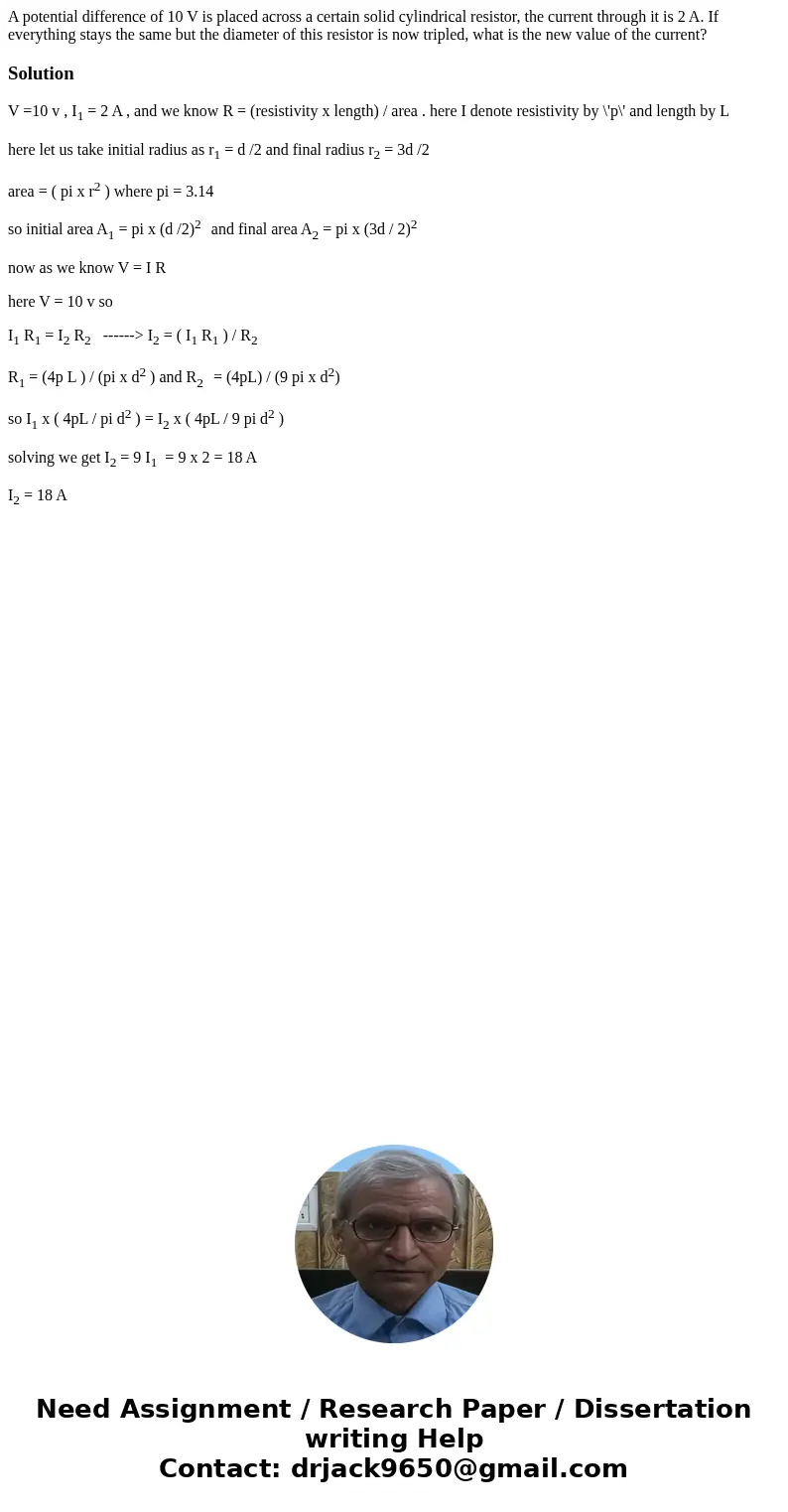A potential difference of 10 V is placed across a certain so
A potential difference of 10 V is placed across a certain solid cylindrical resistor, the current through it is 2 A. If everything stays the same but the diameter of this resistor is now tripled, what is the new value of the current?
Solution
V =10 v , I1 = 2 A , and we know R = (resistivity x length) / area . here I denote resistivity by \'p\' and length by L
here let us take initial radius as r1 = d /2 and final radius r2 = 3d /2
area = ( pi x r2 ) where pi = 3.14
so initial area A1 = pi x (d /2)2 and final area A2 = pi x (3d / 2)2
now as we know V = I R
here V = 10 v so
I1 R1 = I2 R2 ------> I2 = ( I1 R1 ) / R2
R1 = (4p L ) / (pi x d2 ) and R2 = (4pL) / (9 pi x d2)
so I1 x ( 4pL / pi d2 ) = I2 x ( 4pL / 9 pi d2 )
solving we get I2 = 9 I1 = 9 x 2 = 18 A
I2 = 18 A

 Homework Sourse
Homework Sourse